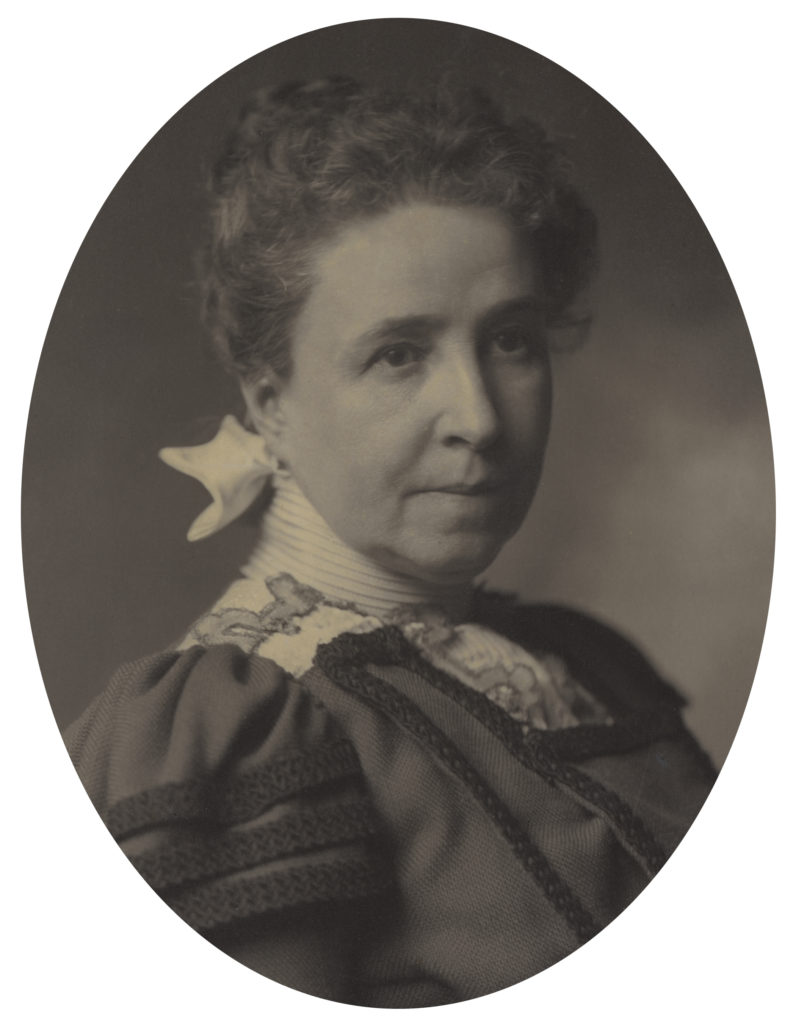At some point around 1884, soon after her husband, William Gillespie Ewing, was healed through Christian Science of a malady which physicians had pronounced incurable,1 Ruth Babcock Ewing visited with a Christian Science practitioner.
“Why don’t you study Christian Science and learn how to take care of your own family?” the practitioner asked Mrs. Ewing.
The question took Ruth aback. Was it possible for anyone to take up the study of this Science, she wondered? The practitioner thoughtfully responded: “It is for every man, woman and child; it is simple Christianity.”2
Ruth duly took it upon herself to become “an investigator of its merits,” as she recalls, learning not only how to care for her family in the process, but also finding personal relief from a longstanding and grievous illness.3

Ruth and William’s two daughters, Mary and Ruth, would also become followers of Christian Science.4 Many years later, Mary recalled how studying the Christian Science textbook, Science and Health with Key to the Scriptures by Mary Baker Eddy, had impacted the household: “It began at once to give us a new and true basis of thought; to educate us out of our petty, limited, and selfish sense of life; to free us from fear of sickness and accident, poverty and misfortune; it emptied our well-filled medicine chest of all its drugs and tonics and plasters; it began to make us happier and healthier and more active and useful; it healed our sicknesses; in fine, it worked a revolution in our daily living, and the truth that we were learning spread from us to others and began to work the same miracle in other lives.”
Speaking on behalf of her mother and her younger sister, Mary went on to note, “During all the years that have elapsed since then, Christian Science has been our only physician, and the Christian Science textbook has been our daily guide and counsellor.”5

Her sister Ruth also recognized the marked change after Christian Science was introduced to the family. Speaking of her parents, she wrote, “Both were saved for forty of the happiest, most useful, and healthful years of their lives, in which they dedicated themselves unreservedly to the furtherance of Christian Science and its ministry to mankind.” And speaking of herself and her sister, she added, “We ourselves have been for years the beneficiaries of this healing truth.”6
“One of my best teachers”
Ruth and William Ewing both proved active in the Christian Science Movement: he as lawyer and judge turned Christian Science lecturer, she as a Christian Science practitioner and teacher based in Chicago and later Highland Park, Illinois.7 Mrs. Ewing would eventually receive instruction from Mrs. Eddy in three separate classes at the Massachusetts Metaphysical College in Boston,8 and she was one of 12 students chosen to read an address at the Congress of Religions in the 1893 Chicago World’s Fair.9 In 1895, at Mrs. Eddy’s request, Ruth was ordained pastor of First Church of Christ, Scientist, Chicago.10 When the Bible and the Christian Science textbook replaced personal preaching in Christian Science churches, she became Second Reader, serving alongside First Reader Edward A. Kimball.11
“Mrs. Ewing is one of my best teachers. . . .” Mrs. Eddy later wrote to judge Joseph R. Clarkson, who, like Ruth’s husband, left a successful political and legal career for Christian Science.12 In 1923, after Ruth’s passing, her students remembered their teacher’s “sweet humility,” “willingness to wait upon God for direction and guidance,” and “unshakable confidence in the omnipotence of God, good.”13
The next generation
Among Mrs. Ewing’s students were her own two daughters, and it’s easy to imagine the joy it must have brought her and William to see Mary and Ruth following in their parents’ footsteps.14

Mary’s early education in Chicago was augmented by private tutoring, and by serving as a secretary to her father when he was United States Attorney for the Northern District of Illinois.15 She took up the healing practice of Christian Science in 1907, and in addition to becoming a Christian Science practitioner and teacher like her mother before her, she also served as Second Reader of First Church of Christ, Scientist, Chicago. Mary’s numerous contributions to the activities of The Mother Church left an indelible mark. She was a member of the Christian Science Board of Lectureship from 1918 to 1926, served as a Trustee of The Christian Science Pleasant View Home and The Christian Science Benevolent Association, and was a member of the Christian Science Bible Lesson Committee for eleven years. She also served as Clerk of The Mother Church from 1942 to 1946, as President from 1933 to 1934, and she taught the 1946 Normal class of the Board of Education.16
Like her father, Mary traveled widely to deliver lectures.
“A Christian Science lecture is a marvelous thing,” she once wrote, “it is . . . some expression of the Word of God, the power of divine Mind made manifest. It voices the good news to men which Jesus proved to be true, and which in our own time, through divine revelation, is presented to the world as demonstrable knowledge of Life, and is therefore made available and practicable in the daily experience of every thinking individual.”17

Mary’s sister, Ruth, would also dedicate herself to the activities of Christian Science. She joined The Mother Church in 1905, was a member of First Church of Christ, Scientist, Chicago, and was listed in The Christian Science Journal as a practitioner from June 1926 to 1940 in the Chicago and Highland Park, Illinois area.18
Combined, all three Ewing women would dedicate exactly 90 years to the Christian Science healing practice.19 Their work significantly impacted the movement’s activities in Chicago and Boston, as well as throughout the United States and beyond through Mary’s lecture work.
The practitioner’s promise to Mrs. Ewing back in 1884, that Christian Science is for “every man, woman and child,” was certainly proved in the fruitful work of this close-knit and dedicated family.